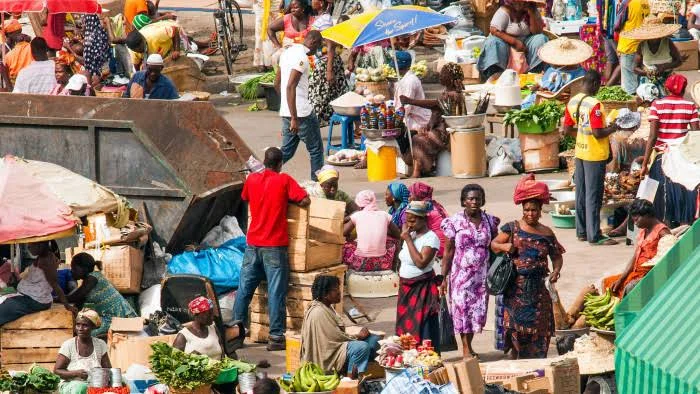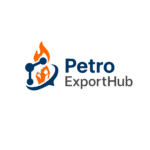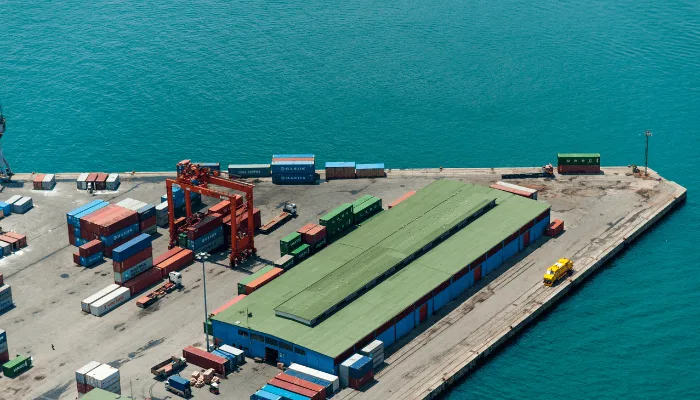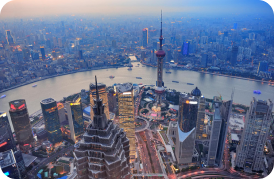
Top African Markets for Petrochemicals: Opportunities Beyond Asia
Introduction
Africa is no longer just a hinterland for Asian or European suppliers — it is a fast-evolving set of regional markets with rising demand for petrochemicals across infrastructure, transport, agriculture, and manufacturing. For exporters who historically targeted Asia, new opportunities are appearing in Africa’s largest economies — notably Nigeria, South Africa, Egypt, Morocco, and Kenya — driven by refinery projects, urbanization, road and water infrastructure, and local industrialization programs. Sellers of polymers (HDPE/PE100B), base oils (SN150), and commodity chemicals such as monoethylene glycol can find attractive, less-crowded channels for growth — provided they understand local dynamics, logistics, and regulatory hurdles. media.afreximbank.comIntelpoint
Why Africa Matters Now for Petrochemical Exporters
Growing infrastructure spend — Governments across Africa are investing in water distribution, sanitation, road and energy projects, creating demand for pipes, fittings, and industrial polymers (a direct opportunity for PE100B). Several market reports project steady growth in the African PE pipes market over the coming decade. Research and Markets6Wresearch
Downstream capacity build-out — New refineries and petrochemical plants, notably the Dangote complex in Nigeria, are shifting Africa from net importer to regional producer in some segments (polypropylene, refined fuels) — but the continent still needs feedstock and specialty chemicals like base oil SN150 for lubricant blending and monoethylene glycol for textile/PET applications. This creates import windows and re-export hubs. ReutersThe Business Research Company
Diversifying suppliers & quicker decision cycles — Local buyers often prefer faster lead times, flexible commercial terms, and suppliers who can handle small-to-medium order sizes — attributes that regional exporters (including Middle Eastern players) can leverage better than far-flung producers. media.afreximbank.com
Top African Markets: Snapshot & Why They Matter
| Country | Why it Matters (Petrochemical Demand Drivers) | Key Opportunities |
|---|---|---|
| Nigeria | Largest population & fast urban growth; new Dangote refinery/petrochemical complex expanding local capacity. | Large market for PE pipes, PP/PE resins, and lubricant base stocks (SN150). Reuters |
| South Africa | Most industrialized economy in sub-Saharan Africa; automotive, mining, and manufacturing drive lubricant & polymer demand. | Strong market for base oil (SN150), industrial chemicals, and PE piping. Intelpoint |
| Egypt | Strategic Mediterranean gateway, major infrastructure programs, large population. | Water & sanitation projects increase demand for PE100B pipes and MEG for textile/PET industry. media.afreximbank.com |
| Morocco | Port infrastructure (Tanger Med), proximity to Europe, growing industrial parks. | Re-export hub to West Africa; demand for polymers and specialty chemicals. media.afreximbank.com |
| Kenya | East Africa gateway with growing urban infrastructure and construction projects. | PE piping, packaging resins, and smaller volumes of base oils/solvents. media.afreximbank.com |
Product-specific Opportunities
PE100B (HDPE pipelines)
Africa’s water and sanitation upgrades, irrigation projects, and gas distribution pipelines are key demand engines for HDPE pipe systems. Regional PE pipes market reports show healthy CAGR projections, driven by replacement of corroded metal pipelines and need for flexible, long-life solutions. Exporters of PE100B can target municipal tenders, EPC contractors, and regional distributors who buy in containerized or coil form. Research and Markets6Wresearch
Base Oil SN150 (Lubricants)
Automotive and industrial lubricant markets are expanding with vehicle fleet growth and industrialization. Base oil demand tends to be regionally clustered around hubs with blending capacity (South Africa, Egypt, Nigeria). Suppliers of base oil SN150 should evaluate relationships with local blenders, oil marketers, and importers that manage storage/financing. Weekly regional price monitoring and flexible shipment sizes (ISO tanks, parcels) help win orders. Lubes’N’GreasesChemAnalyst
Monoethylene Glycol (MEG)
MEG demand in Africa is more concentrated: textile regions, PET bottle manufacturing, and some industrial antifreeze applications. While volumes are smaller than in Asia, local converters value stable supply and compliant documentation. monoethylene glycol opportunities are often tied to polyester fiber plants and emerging packaging lines. media.afreximbank.com
Market Entry & Commercial Playbook
Local partnerships — work with established distributors and blending houses; in many African markets trust and on-the-ground presence are decisive.
Flexible commercial terms — smaller minimum order quantities, consignment stock in bonded warehouses, and attractive payment terms (LCs, confirmed credit) help bridge trust gaps.
Logistics planning — use regional hubs (Tanger Med, Durban, Port Said, Jebel Ali for re-exports) and factor inland transport costs; last-mile distribution can dominate landed price. media.afreximbank.com
Regulatory & quality compliance — provide clear SDS/COA, local language labeling if needed, and ensure your HS code and documentation match importer expectations.
Value-added services — technical training for local applicators, specification support for PE100B welding/installation, or blending assistance for base oil customers differentiate suppliers.
Risks & Mitigations
Currency & payment risk — volatility of local currencies (NGN, EGP, ZAR) requires payment structures hedged via USD contracts or confirmed LCs.
Infrastructure & inland logistics — unreliable road/rail networks increase lead time and costs; using port hubs with bonded storage reduces exposure.
Regulatory & procurement cycles — public tenders can be slow; private sector and EPC contracts often provide faster routes.
Competition & price sensitivity — African buyers are price-aware; suppliers who combine reliable logistics with flexible quantity options win repeat business.
Table — Entry Routes & Commercial Models
| Entry Route | Pros | Cons | Best For |
|---|---|---|---|
| Direct export to importer (FOB) | Lower handling, margin control | Requires importer trust | Established buyers in SA, Egypt |
| Through local distributor | Faster market access, local credit | Margin sharing, control loss | New markets—Kenya, Morocco |
| Bonded warehouse / FTZ (re-export) | Faster customs & repacking | Storage fees | Small orders, re-exports to landlocked countries |
| Long-term offtake + financing | Stable demand, CAPEX support | Commitment risk | Large projects, municipal pipelines |
Case Study Highlight: Dangote & West Africa (Opportunity Example)
Dangote’s ramp-up of refinery and petrochemical output in Nigeria creates both competition and opportunity: while some polymer/polypropylene volumes will be locally produced, the region still needs HDPE grades, specialty base oils and MEG for certain applications. Exporters who coordinate with distributors and leverage bulk or bagged shipments can secure supply contracts to Nigerian blenders and converters. Reuters
FAQs
Q1: Which African country is the single best target for PE100B exports?
There’s no one-size-fits-all; Nigeria and Egypt offer large project pipelines, while South Africa provides steady industrial demand. Entry strategy depends on product mix and logistics. Reutersmedia.afreximbank.com
Q2: How should I price base oil SN150 for African buyers?
Quote FOB/ CIF with clear incoterms, offer smaller parcel shipments (ISO tanks or parcels), and monitor regional base oil indices — flexibility and reliable lead times often beat the lowest headline price. Lubes’N’GreasesChemAnalyst
Q3: Is monoethylene glycol demand large in Africa?
MEG demand exists but is concentrated (textile hubs, PET manufacturing). Expect smaller, consistent orders rather than large volume tenders typical of Asia. media.afreximbank.com
Q4: What logistics pitfalls should exporters expect?
Port congestion, inland transport bottlenecks, paperwork delays and local clearance rules can all add days and cost — partnering with experienced freight forwarders and using bonded warehousing mitigates risk. media.afreximbank.com
Conclusion & Recommendations
Africa presents a meaningful and growing market for petrochemical exporters willing to adapt commercial models. PE100B demand is rising with infrastructure projects; base oil SN150 finds steady industrial and automotive use; monoethylene glycol serves niche but strategic end-users. Success depends on local partnerships, flexible shipping and payment terms, and robust logistics planning. Exporters who approach Africa as a collection of regional markets — not a single monolith — and who back offers with technical support and reliable delivery will capture significant market share beyond the crowded Asian corridors.

Kenya & East Africa: Growing urban projects and construction demand make them strategic growth markets.
Nigeria: Project-driven demand and new refinery output create volume opportunities.
South Africa: Industrial demand for lubricants and PE resins is steady and predictable.
Egypt & Morocco: Gateway markets with major infrastructure and re-export potential.
Call to Action
- Want this packaged as a market brief (one-page PDF) for your sales team or an export-ready pitch deck for buyers in Nigeria and Egypt? I can prepare a downloadable brief with target contacts, logistics costs estimates, and a sample commercial offer template for PE100B, base oil SN150, or monoethylene glycol — tell me which product and market you want first.
- sales@PetroExportHub.com

Related posts
Mono Ethylene Glycol (MEG) serves as a cornerstone for modern antifreeze and coolant formulations, offering reliable freezing protection and heat resi . . .
Explore Solvent 100’s specs, uses, and export opportunities from Iran. Ideal for paint, ink, and adhesive buyers in India, Turkey, UAE, and Africa. . . .
Explore everything you need to know about exporting sulphur from Iran in 2024 — including types, packaging, documents, ports, prices, and top import . . .
Explore Iran’s top ports for petrochemical exports, including Bandar Imam Khomeini, Assaluyeh, and Bandar Abbas. Compare infrastructure, accessibili . . .
Learn the key differences between polypropylene (PP) and polyethylene (PE), their applications, advantages, and how to choose the right polymer for yo . . .
Discover how a Turkish plastics manufacturer reduced costs by 22% through importing HDPE from Iran. Real-world case study by PetroExportHub. . . .
Learn why Iran is a leading exporter of polyethylene (PE). Discover grades, global applications, and how PetroExportHub connects buyers with top suppl . . .
We are here to answer your questions....
Petro Export Hub
PetroExportHub specializes in the export of premium-grade petrochemicals, minerals, and industrial chemicals from Iran, serving international markets with reliability, transparency, and tailored logistics solutions
Tehran Office
Phone:
0214865484 | +989127607241
Address:
Tehran..
China Office
TEL :
0211400
Address:
Zhongzhou Bie Lu, Zhongcheng Street, Yiwu City, Zhejiang Province, China
Quick Access
Quick Access
- Contact Our Sales Team
- Frequently Questions
- Shipping & Logistics
- Become a Partner
- Certificatins & Quality







